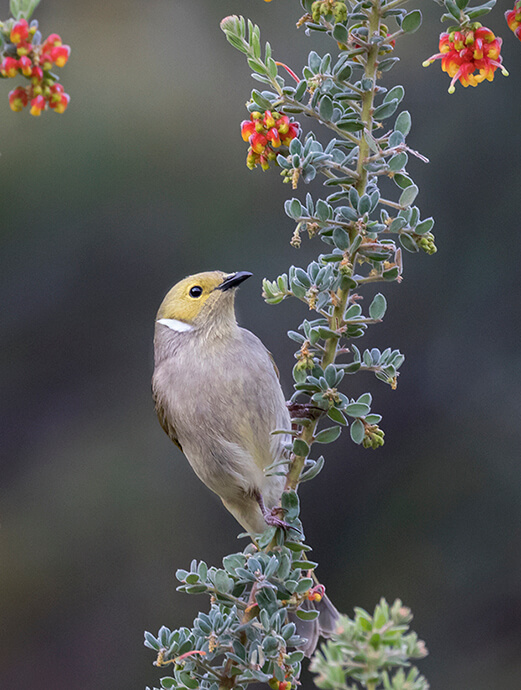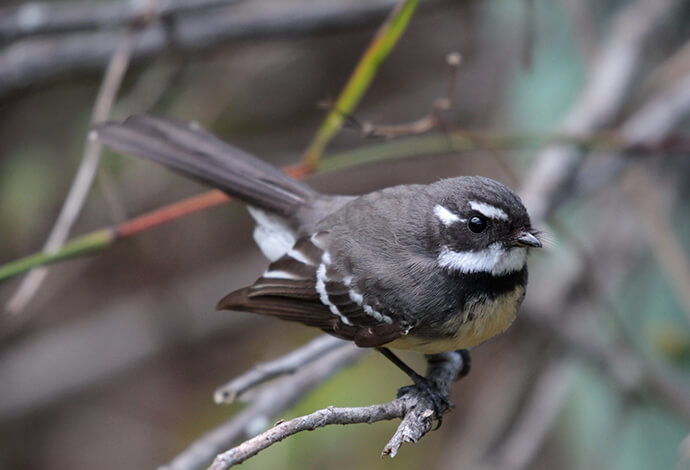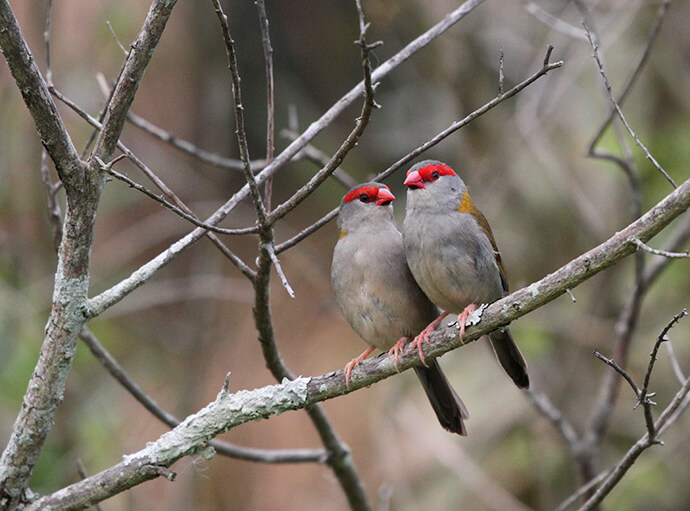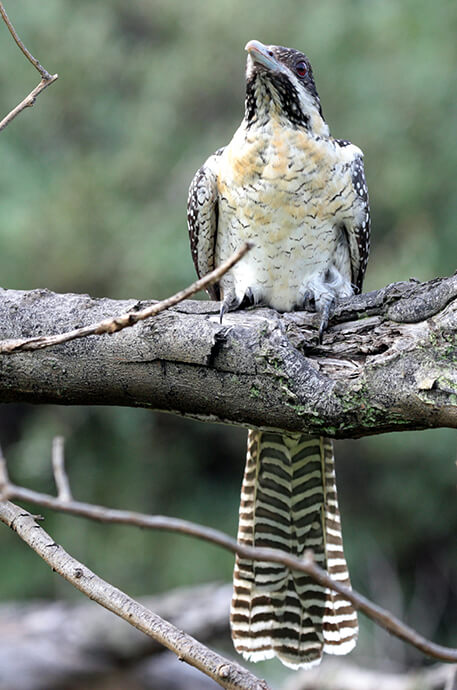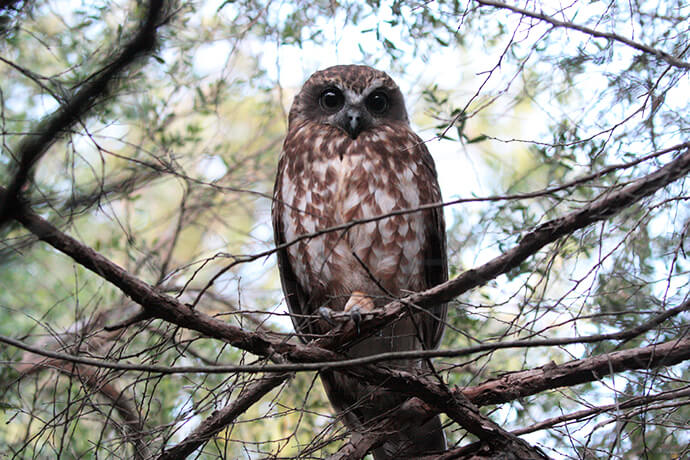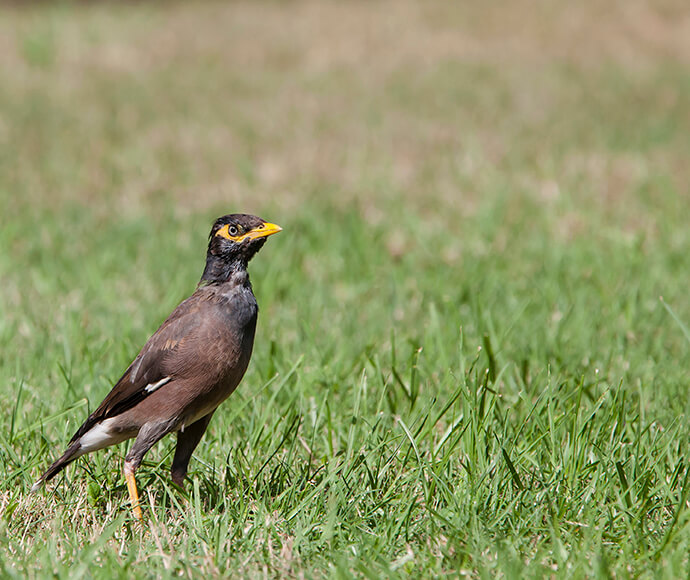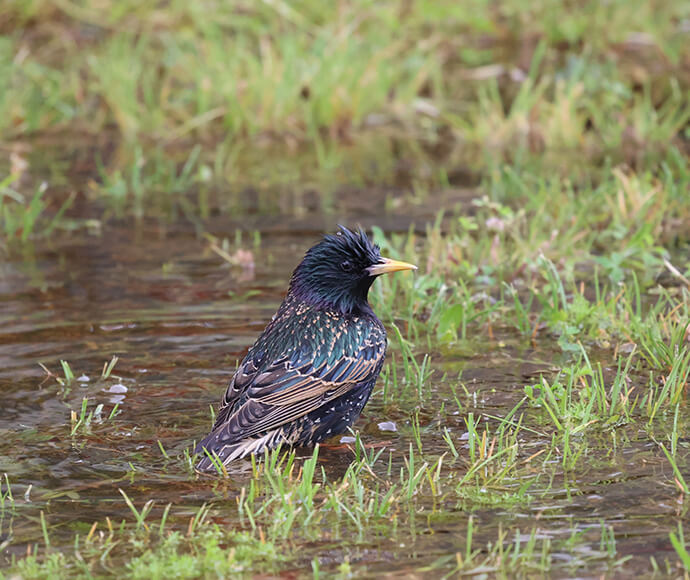Would you like to see more birds in your garden? The birds that will visit your garden depend on where you live and what plants you grow.
You can entice more birds to your garden by growing what they like to eat, keeping your cat indoors and not using poisons.
Birds you could see in your garden
Nectar feeders
The most widespread and noisy bird in Sydney is the rainbow lorikeet, a nectar feeder.
Sydney is home to many colourful and noisy parrots, which can be divided into nectar feeders and seed eaters.
Other nectar feeders include the scaly-breasted, musk and little lorikeets. These parrots like nectar-rich plants like eucalypts, bottlebrushes, grevilleas, and banksias.
Honeyeaters also feed on nectar.
Common Sydney honeyeaters include the:
- New Holland honeyeater
- noisy miner
- white-plumed honeyeater
- little wattlebirds
- red wattlebirds.
Honeyeaters feed on the same nectar-rich plants as the parrots, but their longer beaks and brush-like tongues allow them to also reach the nectar in tubular or bell-shaped flowers.
Local plants are best, but nectar feeders will feed from exotic plants too.
Insect eaters
Birds that eat insects are much loved by gardeners. These insectivores love a garden filled with shrubs where they can hide from predators and bigger birds in between searching for grubs, aphids and other insects.
Growing different types of plants and avoiding insecticides will increase the diversity of insects in your garden, which will attract different species of birds.
Species you may see include the superb blue wren, silvereye, yellow-rumped and brown thornbills, grey and rufous fantails, willie wagtail and the tiny and very beautiful spotted pardalote.
Gardens rich in insects are also good for migrating species like cuckoos, flycatchers, and the rufous fantail.
Larger birds like the Australian magpie, pied and grey butcherbird, currawong, kookaburra, Australian raven and tawny frogmouth eat larger insects like grasshoppers, moths and cicadas, as well as lizards and frogs. A garden with plenty of places for insects and lizards to breed will provide food for these species.
Seed eaters
If your garden has native grasses, you may have the red-browed finch come to visit. This is the most common finch found in Sydney, but you may also see the rare double-barred finch.
Apart from the rainbow lorikeet, seed-eating parrots are some of the most abundant birds in Sydney. Cockatoos, galahs, corellas, king parrots, and rosellas eat seeds from acacias, conifers, hakeas and eucalypts.
When food is scarce, cockatoos and corellas may visit gardens for the seeds of fruit trees like oranges.
Many of these parrots, as well as red-rumped parrots, may be seen on the ground eating grass seed. The yellow-tailed black cockatoo will eat seeds from she-oaks and pine trees.
Fruit eaters
Trees that produce berries and fruit attract fruit-eating birds such as the Australasian figbird, eastern koel, channel-billed cuckoo, currawong, silvereye, satin bowerbird, pigeons, and mistletoe bird.
Fruit trees also attract insects and insect-eating birds.
Birds of prey
Birds of prey are not common in Sydney, but you might see these larger birds in your neighbourhood. These include:
- owls, like the barn owl or powerful owl
- raptors, such as the peregrine falcon, goshawks, sea eagle and black-shouldered kite.
Check out the 24-hour live eagle cam and watch what sea eagles are up to in their nest at Newington Nature Reserve in Sydney.
Visit Birdlife Australia’s Powerful Owl Project and report your sightings or volunteer.
Common pest birds
The common or Indian myna (Acridotheres tristis), the common or European starling (Sturnus vulgaris) and the noisy miner (Manorina melanocephala) are considered pest birds in New South Wales.
The common myna and common starling are introduced species with well-established populations, whereas the noisy miner is a native Australian species. Although native, the noisy miner is considered a pest because of its aggressive exclusion of other birds from woodlands and forests.
The common myna, common starling and noisy miner thrive in urban areas and other open spaces.
All 3 species are aggressive and will:
- kill young and destroy eggs of native birds and small mammals
- take over or evict birds such as parrots and mammals such as sugar gliders from their tree-hollow nests
- mob other birds in large groups and exclude them from their territory
- outcompete native birds and animals for nest sites, and reduce habitat for these native species
- compete with native birds for food.
Coupled with the broader threat of habitat loss and fragmentation, these pest birds can cause serious displacement problems for some of our native animals.
They also cause other problems because they make lots of noise, roost in the walls and ceilings of buildings, create mess, spread weeds, and damage orchards, crops and market gardens.
Here are some tips for how to deter these pest birds:
- Create a more densely vegetated garden and increase understory plantings in your backyard, including spiky bushes. These pest birds prefer tidy lawns, open spaces and tall trees.
- Protect and enhance remnant bushland in your area. Pest birds prefer forest edges and open areas or reserves and usually avoid the forest interior.
- Replace or break up paved areas and lawns with shrubs.
- Remove scraps of food or rubbish in your yard. Common mynas and starlings are scavengers and will eat almost anything when food is scarce, including garbage.
- Cover your compost bins.
- Remove left-over pet food.
- Avoid planting palm trees and pines, mynas like these for roosting. Plant a variety of native species instead and you may attract more native wildlife.
- If you add a nest box to your garden to encourage wildlife, keep an eye on it and make sure common mynas or starlings don't move in.
- Contact your local bushcare group via your council – both may have strategies in place to deter pest birds and can recommend the best native plants to grow. Some councils provide free native seedlings. Find your local council.
Act now to protect our birds
Birds that breed in hollows are particularly threatened as old trees with hollows are cleared or taken over by introduced animals.
Birds are threatened by habitat loss, insect and rat poisons, and predation by cats and dogs.
There are a range of things you can do or get involved with to help protect our birds:
- Create a garden, no matter how small, with a diverse array of plants.
- Create a haven for small birds.
- Don’t use pesticides and herbicides.
- Keep your cat indoors – especially at night – and put a bell on its collar.
- Protect and create nesting or breeding sites, including hollows in trees.
- Plant trees and other native plants that create natural food.
- Don’t provide seeds or other food.
- Take part in the Aussie Bird Count and help Birdlife Australia learn more about the birds we share our homes with.
- Help scientists learn more about some of the birds and their behavioural adaptations in urban areas using the Big City Birds app or website. The Big City Birds Project focuses on 5 bird species: the sulphur-crested cockatoo, Australian brush-turkey, Australian white ibis, little corella and long-billed corella.
- Map sightings of feral animals in your area.
- Watch the ABC Catalyst program where Dr Ann Jones discovers The Secret Lives of Our Urban Birds. Although filmed in Melbourne, there are lots of similarities with birds in Sydney.
Featuring some of our struggling feathered friends
The little penguin is the smallest species of penguin in the world. Sydneysiders are lucky enough to have a population of these endearing penguins living right on their doorstep.
This endangered population of little penguins, in a secluded cove in Sydney's North Harbour, is the only breeding colony on the New South Wales mainland.
Find out more about little penguins, what they sound like, their unique breeding and child-rearing habits, where you can see them and what's being done to help them.
If you live in Manly Point, find out how you can help the little penguins in your community by downloading our little penguin fact sheet.
The bar-tailed godwit has been known to fly more than 11,000 kilometres non-stop, from Alaska to New Zealand, on only 300 grams of fat.
They arrive in Sydney each year in August from breeding grounds in the northern hemisphere. Some of our shorebirds have been migrating many thousands of kilometres every year for 20 years.
Botany Bay, next door to Sydney Airport, provides a haven for resident and migratory shorebirds to roost, rest, feed and breed.
Our shorebirds include pied oystercatchers, godwits, little terns, eastern curlews, whimbrels, and little black cormorants.
Our disappearing small birds
Have you noticed you don’t get as many small birds visiting your garden anymore? If so, you’re not imagining it.
Small birds are disappearing from our gardens and natural areas. This is partially because of habitat loss, cats and pesticide use. But what we plant has a huge impact.
Nectar-rich natives like the colourful eucalypts and grevilleas entice aggressive nectar eaters into our gardens. These birds are territorial and chase away other birds. The native noisy miner, Manorina melanocephala, is the main culprit and is such a problem for our little birds it has been declared a key threatening process.
You can help small birds by growing more shrubs – dense planting creates habitat for them to be safe, feed and build nests.
Share your pictures
Share your pictures across social media and show us what you’re doing to help Sydney’s native plants and animals.
#sydneynature
#ilovesydneynature
#natureforall
